Introduction to Multiverse AI
For the past few years, the evolution of artificial intelligence has really changed the way we use technology today. Among the lines, Multiverse AI is the new player in AI language modelling. Its goal is to improve human-computer communication by implementing tools to process and generate human-like responses in natural language. There’s no denying that AI language models have played a positive and profound role in improving productivity and the availability of information in the digital era.
At the core of Multiverse AI, there’s the ChatGPT model family, with models specialized for different tasks, such as customer service, content creation, coding support, etc. The models we’ve described show substantial advancements in all three respects in the development of these models. Notable evolutions include the GPT-4, GPT-4 Turbo, and GPT-4. 1, GPT-4. 5, GPT-4O Mini, and GPT-3. 5 Turbo Nano. Every model iteration is an advancement on the last, offering newfound performance and efficiency to help users make their productivity soar.
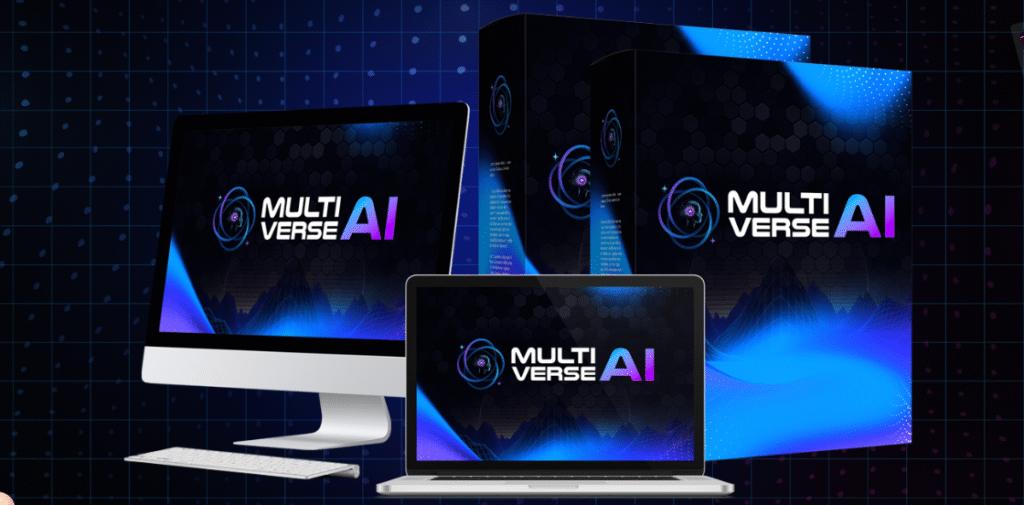
For example, the GPT-4 model has a better understanding of what the user is asking and responds in a way that isn’t just correct, but also contextually accurate. In the meantime, GPT-4 Turbo and its “variants,” e.g., GPT-4.5 and GPT-4O Mini, are designed for speed, while not sacrificing response performance, for potential real-time use. On the other hand, GPT-3.5 Turbo Nano is for small-scale deployment, which means more opportunity to reap the benefits of cutting-edge AI technology even for edge devices with limited hardware resources.
The continuous iteration of these models is a sign of increasing need for AI solutions that improve individual and collective workflows. As we see deeper into the functionality and potential applications of Multiverse AI, it’s more apparent than ever that this is the technology that will shape the future of human-machine interfaces.
Features of the ChatGPT Family Models
- ChatGPT Family: GPT 5 GPT GPT 4, GPT 4 Turbo, GPT 4.1, GPT 4.5, GPT-4o Mini, GPT 3.5 Turbo Nano & more
- Google Gemini Suite: Gemini 1.5 Pro, Gemini 1.5 Flash, Gemini 2.0 Flash
- Grok AI Models: Grok-1, Grok-1.5, Grok-2, Grok-3, Grok-4
- Claude Models: Claude 3 Opus, Claude 3.7 Sonnet, Claude 3.7 Haiku
- DeepSeek AI: DeepSeek V3, DeepSeek R1, DeepSeek Coder V2
- DALL·E (Image AI): DALL·E 2, DALL·E 3
- Kling Video Models: Kling 1.5 Pro, Kling 1.6 Pro, Kling 2.1 Standard, Kling 2.1 Master
- Google Veo Video AI: Veo 2, Veo 3
- ElevenLabs Voice AI: Eleven v3 Alpha, Eleven Multilingual v2, Eleven Flash v2.5, Eleven Turbo v2.5
- Stable Diffusion: Stable Diffusion 1.x, 2.x, XL (SDXL)
- Meta LLaMA Models: LLaMA 1, LLaMA 2, LLaMA 3, Code LLaMA
- FLUX AI: FLUX.1 Schnell, FLUX.1 Dev, FLUX.1 Pro, FLUX.1 Pro Ultra
- No Monthly Fees: Unlimited access for a one-time price
- Free Future Versions: Automatically get future AI updates & model versions
- Turbo Mode – Priority access to faster versions of Top AI’s
- Single Login: No need to switch between multiple AI platforms
- Auto-AI Selection Mode – Let Multiverse choose the best AI model for your task
- All-In-One Super Dashboard – One command center.
- Team Collaboration – Share dashboard with your VA, team or freelancers
- 1-Click Export – Instantly download video, voice, image, or content
- DFY Prompt Library: 1,000+ high-converting prompts for any niche
- Quick-Start Templates: Ready-made content & video frameworks
- Commercial License Included – Create & Sell AI Assets to Clients
- Client Project Manager – Handle multiple client outputs in separate folders
- 100% Beginner-Friendly – Simple, Powerful & Easy-to-Use Interface Even a Newbie Can Master in Minutes
- Risk-Free Guarantee – Backed by Our 30-Day Iron-Clad.
- Early Access to Beta Models: Be the first to use cutting-edge AIs
- Unlimited Updates Included – One-time payment covers all future upgrades
- 24/7 Priority Support – Live chat + email assistance
- Exclusive Community Access: Private mastermind group
Performance Comparisons
In the consideration of how the ChatGPT family of models performs, it is essential to consider several dimensions, including accuracy, response time, and extensibility to several applications. Each model has specific characteristics that make it more or less effective in various scenarios.
One of the primary metrics for the assessment of an AI model is the accuracy. In the ChatGPT series, the advancements are visible when moving from one of the first released models, ChatGPT (e.g. Persing et al., 2010), to the current release. The most recent incarnation usually features improved context awareness, so resulting GIRs are not only factually exact but better aligned with what the user meant to ask. This rate of accuracy would result in a more satisfying interaction and important applications in customer services and educational tools.
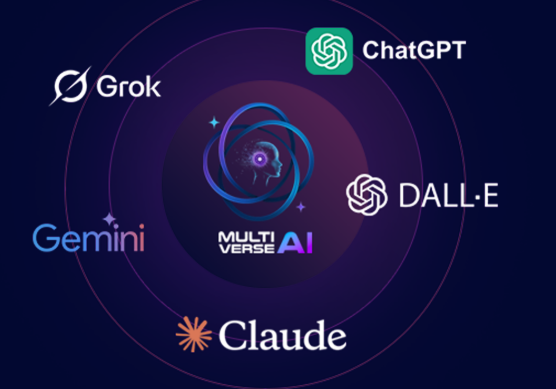
Responsiveness is another key point to compare. Although all models in the ChatGPT family push for efficiency, there are different versions depending on the amount of computation and the complexity of the query. Models, which are intended to address more complex interactions, may take longer to respond because more processing would need to be done. However, recent optimizations have brought end-to-end latency down for all models, which is good news for real-time applications such as chatbots and virtual assistants.
Further, it is an indispensable property in the evaluation of a model’s ability to handle a large range of tasks. Fifteen of ChatGPT have exhibited marked improvement in prompt adaptation, enabling them to succeed across tasks like creative writing, technical completion, and conversation. This flexibility strengthens and broadens the range of possible applications of the models across industry, from creative industries and gaming to software design and development.
Performance comparisons on a range of use cases also demonstrate the strengths and weaknesses of each model in the ChatGPT family. New benchmarks – which establish response times and chemical efficiency of the models and give potential users the opportunity to choose the optimal model for their special requirements – are published.
Use Cases and Applications
The ChatGPT model family, a part of the wider Multiverse AI universe, can be practically applied to many domains, demonstrating possible improvements in both productivity and creativity. One of the obvious use cases here is in customer support, where models like these can automatically answer what a customer is asking in a chat window. ChatGPT can be implemented in chatbots or virtual assistants, enabling businesses to enhance customer interactions, cut down on response times, and maintain 24/7 support for guaranteed satisfaction of clients.
Another important use is content generation. Writers and marketers are using the powers of ChatGPT for brainstorming article ideas, writing article drafts, or even drafting marketing copy. Because of its context-aware and coherence-maintaining capabilities, users of the APAR apparatus can efficiently generate high-quality content, thereby speeding the creative process. Models can also be used to produce social media posts, blog posts, and product descriptions, which are useful tools for digital marketers and content creators.
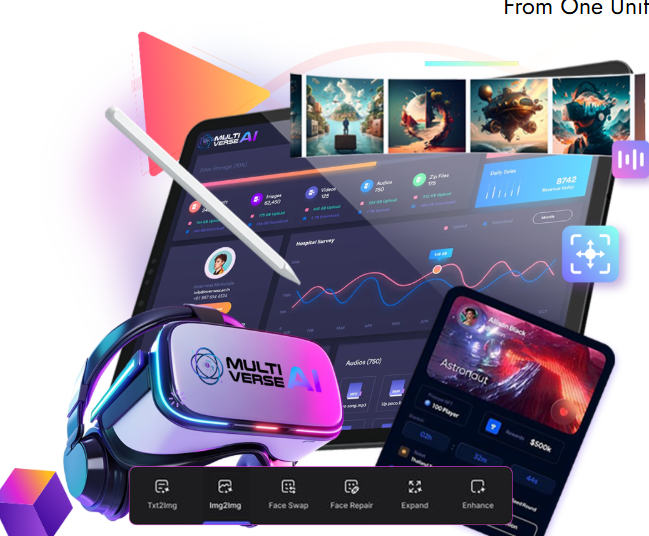
In the domain of education, Multiverse AI’s ChatGPT models can be employed as intelligent tutoring systems. They are able to provide individualised learning, answering questions and explaining all manner of things in the process. This results in a hands-on learning process which allows the students to tackle the material step-by-step, and turns a potential problem in understanding or remembering course content into an asset.”
Furthermore, these models are being increasingly utilized in the field of programming and software computing. Developers may use ChatGPT to support coding, debugging, learn new programming languages, etc. On serving as a live coding assistant, the models could potentially simplify the development process, leaving the developer free to focus on more challenging and less annoying issues.
Taken as a whole, the ChatGPT line of models shows incredible utility across a variety of use cases, naturally fitting into processes to help aid productivity and creativity.
User Experience and Interface
Multiverse AI’s ChatGPT models are built for an easy and accessible user experience. The interface is simple and easy to use, making it a joy to use for tech-savvy people or people new to the tech world. As users discover it for the first time, friendly navigation is used, which makes it easy to orient oneself with what the page can do.
Accessibility One of the key features of Multiverse AI is that it goes; you act. Users will have no difficulty starting a conversation when using the application, customizing settings to their own liking, with no cumbersome menu. The chat panel displayed prominently encourages a natural manner of conversation, where users can talk without being overly bothered by some preposterous features. And such simplicity is vital to ensuring newcomers to AI technology feel comfortable using it.
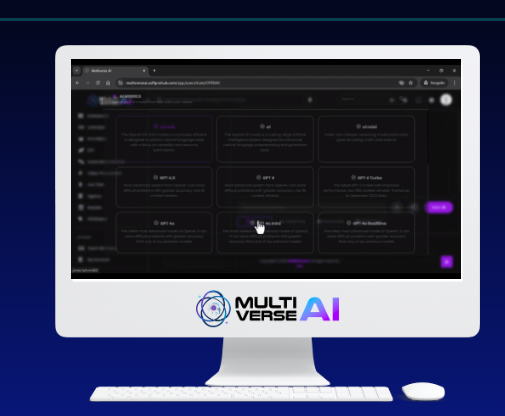
In addition, the platform scales user interaction! The system responds very quickly, but not so rapidly that you don’t have the feeling of a dynamic conversation, an interaction rather than a one-sided exchange with a human interlocutor. This speed not only increased user satisfaction but also led them to investigate a greater variety of questions. The AI learns based on different conversation styles, which means it is a versatile tool that adjusts according to different personalities.
The principles applied in Multiverse AI design focus on consistency between different devices. There’s a consistent experience in that when users access the model on the desktop and access it on a phone, the challenge becomes a consistent one as they shift to the different environments. This interface uniformity serves to make the navigation familiar, which reduces the learning curve for new users.
Based on these capabilities, it is clear that Multiverse AI’s ChatGPT models are designed with a delightful and effective user experience in mind. The combination of intuitive design and responsive interaction is what makes the platform capable of reaching a wide variety of people, from tech geeks to novices. This consideration is what makes Multiverse AI a formidable contender in the online conversational AI solutions space.
Limitations of the Models
And yet, as impressive as the ChatGPT series of models in the Multiverse AI is, they also have some limitations. One thing I have experienced with other models is that they tend to be wrong sometimes. Despite their skill, however, these models may produce incorrect or misleading information. It can be explained for a variety of reasons, such as the dependence of patterns on the training dataset, which might include false information or biased views. Therefore, users ought to be cautious when making use of these models for fact and critical decision-dependent purposes.
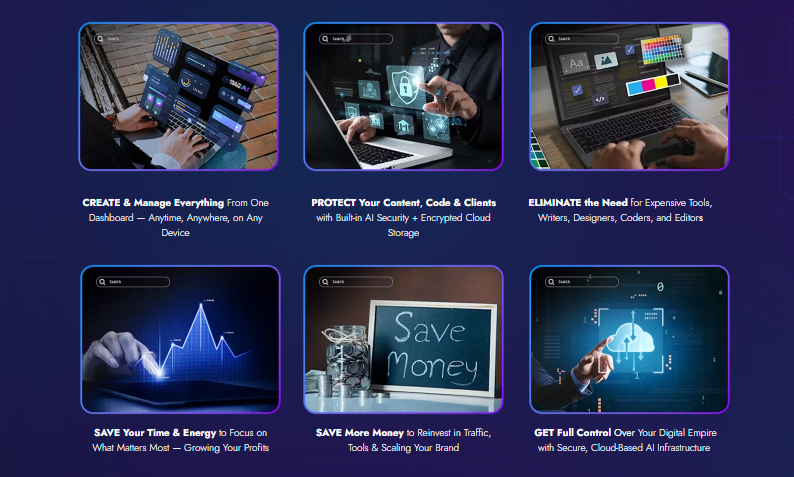
Another significant drawback is the models’ lack of context awareness. While they are engineered to make sense and be relevant in reply to you, these engines are not foolproof for more complex and nuanced dialogue. Failure to maintain context in long exchanges can cause irrelevant or repeated answers. This is especially noticeable when complex issues, understanding of which is necessary, are dealt with. The conversation flow can often appear forced and unnatural, which impedes the user experience and, in turn, the efficacy of communication with these AI models.
In addition, there are ethical concerns that are also an open issue with the usage of ChatGPT Models. The ability to generate harmful content, misinformation or biased statements is a concern from a risk perspective, particularly in sensitive domains such as medical or legal advising. Developers and users need to consider responsibly applying models like these. Data privacy, bias and transparency are still crucial in building trust in AI. Image: tadamichi/iStock The importance of addressing challenges related to privacy, bias, and transparency remains critical to build trust in AI technologies. These ethical dilemmas will have to be recognised and addressed as we move forward with the development and use of the ChatGPT line of models.
Comparison with Competing Technologies
In recent times, the field of conversational AI has witnessed rapid developments with multiple technologies competing against one another. Multiverse AI, as a member of the ChatGPT family, is a strong candidate in this regard. To critically assess its position, we should compare it with other state-of-the-art AI chat technologies like Google’s Bard and Meta’s LLaMA. Each of those rivals has its own distinctive competitive advantages that make them both appealing and useful.
Multiverse AI is unique in its training on broad datasets, giving it a more nuanced comprehension of language and context. This depth enables it to produce cohesive and contextually relevant responses that usually outperform its competitors. On the other hand, even though apps like Bard utilize Google’s powerful search engine, they tend not to be as conversational as Multiverse AI. In the same vein, LLaMA has been improved in performance but presented limitations in user intent understanding on certain users’ expressions compared to Multiverse.
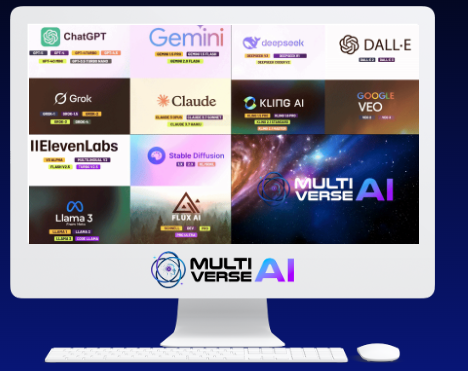
Additionally, user response is an important way to judge the performance of its models. A lot of users have also commented that multiverse AI’s responses are, more often than not, much more human-like and understandable compared to the rest of the tech. This is, of course, all the more true for systems that need to be deeply empathetic and understanding. Of course, some users today love Bard’s ability to draw data from the real world, which has its uses, especially when you’re trying to turn the conversation around. But just because Bard’s based on Slack data doesn’t mean he provides a more natural, more genuine experience.
Performance measures, such as speed and accuracy of responses, must also be considered in this comparison. Multiverse AI will give high-quality answers all the time, but the speed may depend on the server load and the demand of the users. In the end, the appropriate technology will be selected based on the use case, user preference and application types of interactions.
Future Developments and Roadmap
Given that the artificial intelligence (AI) field is constantly advancing, the Multiverse AI platform could see serious improvements that redefine what it can do and be used for. One important direction of future work will be the improvement of natural language understanding and generation. Next versions of the ChatGPT models could use even more advanced algorithms to be more context-aware and responsive. This may lead to a smoother, more enjoyable conversation and to the AI or machine-learning efficiency we need.
Besides, in contrast to Multimodal AI, Multiverse AI will address multimodal integration. Such a capability would enable the models to be able to interpret and react using a fusion of both text and visual, and perhaps even auditory inputs. Those advances would open it up to much wider use across industries, from education to entertainment. For instance, an extended ChatGPT model might be able to tailor learning experiences on the fly by interpreting visual aids in conjunction with textual content.
Furthermore, an interesting path for future developments could be to introduce user-driven personalization of the reconciliation. Allowing users to customize the manner in which to interact with the model and the tone and even the knowledge domains with which it is pretrained, Multiverse AI could provide a more individualized experience. This flexibility is crucial, given the wide-ranging requirements of users in such areas as corporate training, content development and customer support.
In the wider AI industry, we can expect to see closer collaboration between AI builders and regulatory institutions informing the roadmaps of companies such as Multiverse AI. If there is an increased focus on ethical AI, transparency and user privacy, chances are we will see models that don’t just improve with increased functionality but with the emphasis itself on trust and accountability. So, the next stages of the Multiverse AI platform may raise the bar for the industry and level heads, tech with ethics.
Final Thoughts and Recommendations
Now, after an intensive use of the Multiverse AI and the ChatGPT family of models in the deep dive, let’s proceed to recapitulate the main findings that result from that analysis. Various ChatGPT models are with different diversity and model capacity (ca-pca) to satisfy different human demands and diverse domains. Needs are met, from people simply wanting to add conversational agents to websites to help out casual users to businesses that require customer service automation.
In the case of Multiverse AI, it is unique in that it is trained on more extensive datasets, which leads to a richer understanding of language and context. This depth allows it to generate coherent and contextually appropriate responses, which generally dominate those produced by its rivals. On the other hand, while apps like Bard take advantage of Google’s formidable search engine, they aren’t nearly as conversational as Multiverse AI. Similarly, LLaMA has shown better performance but some degradation in the modelling of user intent on some types of users’ expressions compared to Multiverse.
Source: Guy Stallings’ Introduction. Whether you’re a business or company wanting to try out some of our solutions for engaging customers or improving the efficiency of operations, be sure to look at the higher-order GPT resources for corporate usage. These systems often incorporate advances in modelling for better context understanding, for keeping consistency over longer conversations, and to be able to integrate seamlessly with current systems. Before deciding on one of these advanced models, it is wise to take into account the expected interaction volume and profile and the level of customization required.
For developers and tech enthusiasts who want to use the underlying technology for their own custom applications, Multiverse AI has a great set of APIs. In this way, they will be able to build and maintain tailored services specific to their needs. Specifically, the underlying architecture and the performance characteristics should be focused on while integrating such models into a larger pipeline, and not on how the models were trained.
In the end, selecting the appropriate ChatGPT model depends on your desired tasks and your application context. By carefully attending to these diverse factors, users can make the most of the features that Multiverse AI ChatGPT models provide.
Multiverse AI – Frequently Asked Questions (FAQ)
1. What is Multiverse AI?
Multiverse AI is an all-in-one AI platform that integrates the power of multiple advanced models (ChatGPT family, Google Gemini, Claude, Grok, Stable Diffusion, DALL·E, LLaMA, ElevenLabs, and more) into a single dashboard. It allows users to access text, image, video, and voice AI tools without needing separate subscriptions.
2. How is Multiverse AI different from other AI tools?
Unlike standalone AI platforms, Multiverse AI:
- Offers access to all top AI models in one place
- Provides no monthly fees – just a one-time price
- Includes free lifetime updates and early access to beta models
- Has Turbo Mode for faster response times
- Features Auto-AI Selection Mode, which automatically chooses the best model for your task
- Comes with 1,000+ done-for-you prompts and ready-made templates
3. Which AI models are included in Multiverse AI?
Multiverse AI gives you access to:
- ChatGPT Family: GPT-5, GPT-4, GPT-4 Turbo, GPT-4.1, GPT-4.5, GPT-4o Mini, GPT-3.5 Turbo Nano
- Google Gemini Suite: Gemini 1.5 Pro, 1.5 Flash, Gemini 2.0 Flash
- Anthropic Claude: Claude 3 Opus, Claude 3.7 Sonnet, Claude 3.7 Haiku
- Grok AI: Grok-1 through Grok-4
- Meta LLaMA: LLaMA 1, 2, 3 & Code LLaMA
- DeepSeek AI: V3, R1, Coder V2
- Image & Video AI: DALL·E 2 & 3, Stable Diffusion (1.x, 2.x, XL), Kling Video Models, Google Veo 2 & 3
- Voice AI: ElevenLabs v3 Alpha, Multilingual v2, Turbo v2.5, Flash v2.5
- FLUX AI: Schnell, Dev, Pro, Pro Ultra
4. Do I need to pay monthly for Multiverse AI?
No. Multiverse AI is one-time payment only. Once you purchase, you get lifetime access, unlimited updates, and all future AI versions for free.
5. Can beginners use Multiverse AI easily?
Yes! Multiverse AI is designed to be 100% beginner-friendly. It features:
- A simple, intuitive dashboard
- Pre-built templates & ready-to-use prompts
- One-click export options for text, video, audio, and images
- Step-by-step training resources
Even if you’ve never used AI tools before, you can master it in minutes.








